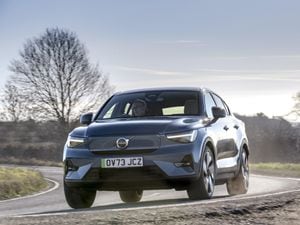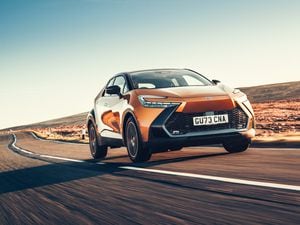First Drive: Is the Toyota Supra 2.0 the sensible choice in this sports car’s range?
With less power but also less weight, the Supra 2.0 might be the best choice in the sports car’s range. Darren Cassey finds out if that’s true.

What is it?

When Toyota revived the Supra name, car enthusiasts rejoiced. However, even though it kept the rear-wheel-drive, six-cylinder engine recipe of the old model, being a collaboration with BMW was enough to stir up controversies related to the purity of the name.
Despite the doubters, the latest Supra has won many fans for its boisterous driving characteristics, but now there’s a new lower entry point – using a 2.0-litre four-cylinder BMW engine. Purists be damned, but even though it’s less powerful, it could be the sensible Supra choice for keen drivers because it’s lighter.
What’s new?

We’ll detail that new engine shortly, but the main benefit is a 100kg overall weight reduction, which Toyota says results in sharper handling. The smaller size of the engine also means it can be placed further back, making it easier to achieve the ideal 50/50 weight balance.
Aside from a few styling tweaks that will make the 2.0 stand out from the 3.0 there’s not a great deal that’s changed. It has an extremely rigid suspension setup with adaptable shock absorbers, lightweight brakes and a ‘sports tuned’ steering system.
What’s under the bonnet?

So to that new engine. It’s new to the Supra, but is commonly found among BMW Group products including the BMW 1 Series and Mini hot hatches. It’s a 2.0-litre, four-cylinder unit with a twin-scroll turbocharger.
It makes 254bhp and 400Nm of torque, which is about 80bhp and 100Nm down on the 3.0. This contributes to a five-second 0-60mph time when using launch control, while the top speed is 155mph.
Where the 3.0 feels so powerful that the car can barely control itself, the 2.0 feels much less frantic. At first it’s a little underwhelming, but once you learn to work without that immediate punch it’s easy to tune into driving smoothly, feeling more like an entry-level Porsche Cayman than a supercar in disguise.
What’s it like to drive?

Toyota has been keen to press home that the 2.0’s USP is its lightweight agility, and once you’ve got your head around the fact you can be a bit more aggressive with your throttle inputs than its bigger brother, it’s easy to get into a flow.
Some sports cars take some learning, but the Supra appears to work with you from the get-go. We tested on a cold day, and the front end struggled for grip in medium-speed corners, having a vague floatiness. But when the road tightened up so did the front, responding eagerly to inputs, making it fun to hustle down a classic British B-road where the 3.0 feels like a terrifying blunt instrument.
How does it look?

The Supra has classic looks, with the long bonnet and small cabin. It’s always surprising just how small it is in real life, taking up a tiny footprint despite packing busy styling into its design.
The front end has a lot going on, with the large air intakes in the front bumper hinting at the performance on offer, while the bulging arches and sculpted door sides are suitably aggressive. From the rear it has a little more subtlety, with the lipped spoiler, wide and narrow rear lights and sporty rear diffuser.
What’s it like inside?

The interior is definitely one of Toyota’s better efforts in recent years, doing a great job of incorporating BMW elements with its own designs. There are plenty of nice materials, too, but it’s anything but spacious, feeling a touch claustrophobic.
There are a few concessions to this being the less expensive model, such as manually adjustable seats and part-Alcantara instead of leather, but the 8.8-inch BMW-sourced infotainment system remains and continues to feel slick.
What’s the spec like?

The subtle changes alluded to earlier are new 18-inch alloy wheels, replacing the 3.0’s 19-inchers, as well as a chrome finish for the exhaust. Inside, it loses the head-up display and electric seats.
What you do get is a four-speaker sound system, heated sports seats, black Alcantara upholstery, the 8.8-inch infotainment system with smartphone integration, and Toyota Supra Safety+, which has extensive driver assistance technology.
A Fuji Speedway Edition upgrade package is available, which upgrades the wheels back to 19 inches with a matte black finish, and adds a white metallic paint job, carbon-fibre inserts in the cabin, and includes leather and Alcantara upholstery.
Prices start at £45,995 for the standard 2.0 model and increase to £47,395 for the Fuji Speedway Edition.
Verdict

On the face of it, with less power and an engine with less instantaneous theatre from every throttle press, the 2.0 might feel like the lesser car in the Supra range. However, once you find yourself on your favourite stretch of road, its light and nimble nature comes to the fore and it becomes arguably more enjoyable for keen drivers.
Couple this with the fact that the equipment levels are near-identical, yet it costs almost £10,000 less than the 3.0, and it starts to feel like something of a steal.





